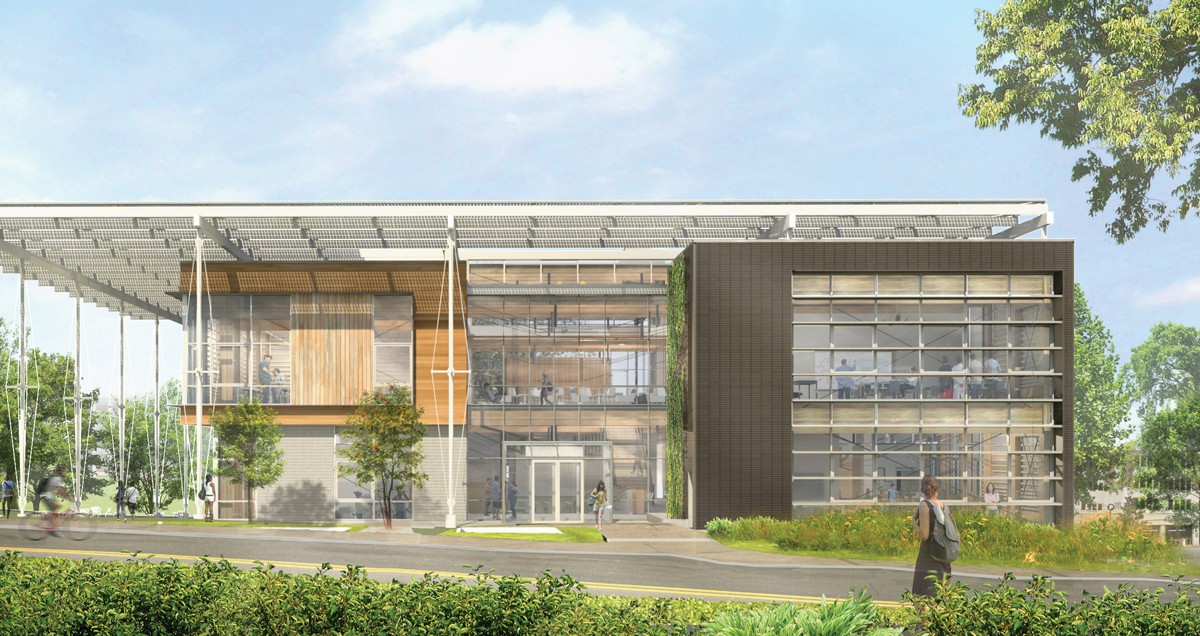
Photograph courtesy of The Miller Hull Partnership in collaboration with Lord Aeck Sargent
At the intersection of Ferst Drive and State Street, on the inner loop of Georgia Tech’s campus, a strikingly modern project—that aims to be not only the Southeast’s greenest structure but also a blueprint for elevating ecoconscious development throughout the region—is rising.
With designs led by Atlanta’s Lord Aeck Sargent and Seattle’s Miller Hull Partnership, Georgia Tech’s Living Building will take its name literally, generating more energy (via photovoltaic panels) and capturing more water (with a large, underground cistern that stores rainwater) than it uses. Its 43,500 square feet of programmable space will include a 170-seat auditorium, two 75-seat classrooms, seminar rooms, labs, a maker’s space, cafe, and student commons, all topped by a rooftop garden and apiary. Its composting toilets will use tiny amounts of water, and its heating-and-air system will modulate itself.

Photograph courtesy of The Miller Hull Partnership in collaboration with Lord Aeck Sargent
The goal is to become the Southeast’s first project fully approved by the rigorous Living Building Challenge, an international green-building certification program.
“We’re hoping to be the pebble in the pond,” says Howard Wertheimer, a project leader and Georgia Tech’s assistant vice president for capital planning and space management. “We want to create opportunities where there’s replicability in what we’re doing so other building owners can embrace some of these ideas.”
Costs of design, geotechnical testing, construction, and even furniture will be covered by a $25 million gift from the Kendeda Fund, an Atlanta-based philanthropy that supports sustainability of communities.
Construction launched this fall, with a goal of finishing in early 2019.
This article originally appeared in our November 2017 issue.













